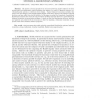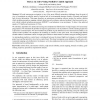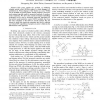240 search results - page 15 / 48 » A passivity-based approach to reset control systems stabilit... |
MMAS
2010
Springer
13 years 2 months ago
2010
Springer
We present a formal procedure for structure-preserving model reduction of linear second-order and Hamiltonian control problems that appear in a variety of physical contexts, e.g., ...
ICRA
2005
IEEE
14 years 1 months ago
2005
IEEE
— When industrial robot arms are controlled using sensor data the performance is dependent on the sensor sampling rate, on delays in signal processing, and on the robot dynamics....
IWSAS
2001
Springer
13 years 12 months ago
2001
Springer
: Self-adaptive software systems use observations of their own behavior, and that of their environment, to select and enact adaptations in accordance with some objective(s). This a...
AROBOTS
1998
13 years 7 months ago
1998
Off-road autonomous navigation is one of the most difficult automation challenges from the point of view of constraints on mobility, speed of motion, lack of environmental structur...
ICRA
2007
IEEE
2007
IEEE
Hybrid Model Predictive Control for Stabilization of Wheeled Mobile Robots Subject to Wheel Slippage
14 years 1 months ago
— This paper studies the problem of stabilizing wheeled mobile robots (WMRs) subject to wheel slippage to a predefined set. When slippage of the wheels can occur, WMRs can be mo...



